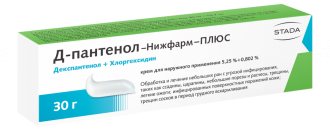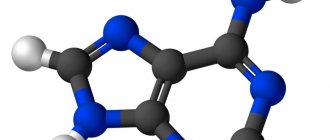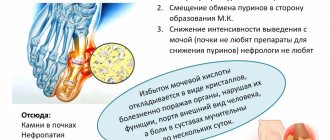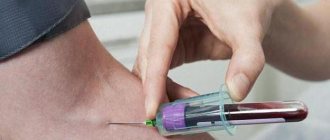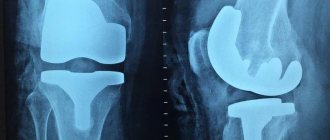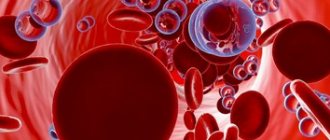Every organ in our body is important, every organ is needed. But special attention must be paid to our “motor” - the heart. Diseases of the cardiovascular system today are one of the main causes of death in all countries of the world. Early diagnosis, disease prevention and treatment of pathologies of the cardiovascular system can not only save your health, but also your life. If the indications are clear and the doctor prescribes medication, then most likely it will be Mildronate.
Mildronate is used during sports
The active ingredient of the drug is meldonium. It is quite successfully and widely used in combination therapy regimens for stroke, cerebral blood supply, ischemia: angina pectoris, myocardial infarction. Moreover, in case of acute damage to the heart muscle, meldonium slows down the growth of necrotic tissue, reducing the time for myocardial rehabilitation. The drug works in the same way for ischemia of brain tissue. It optimizes microcirculation in favor of the tissue area most affected by ischemia. In addition, Mildronate alleviates the consequences of withdrawal syndrome that occurs during the treatment of alcohol dependence.
Also, Mildronate is used in the treatment of vascular pathologies of the eyeball, leading to eye dystrophy.
As a support, the drug is applicable during periods of significant physical activity, as it expands the body's tolerance to it and ensures the flow of oxygen to the tissues. Thus, drugs containing meldonium were taken by athletes during the competitive and out-of-competition period. However, after the introduction of a ban on the use of the drug by the World Anti-Doping Agency (WADA) in 2021, the drug is prohibited for use by athletes.
Mildronate is a metabolic drug that is a synthetic analogue of gamma-butyrobetaine. This substance is found in every cell of the human body. In turn, the drug improves metabolism and energy supply to cells and tissues.
Mildronate is used as:
- cardioprotective;
- antihypoxic (increases resistance to oxygen starvation);
- angioprotective (has a beneficial effect on the vascular wall and microcirculation);
- antianginal agent (directed against angina attacks).
Thus, Mildronate helps improve performance, reduces the severity of manifestations of mental, intellectual and physical stress, and activates tissue and humoral immunity.
Application of Mildronate
Mildronate is recommended for the treatment of the following diseases in adults:
- Coronary artery disease – damage to the myocardium of the heart;
- Heart failure - impaired myocardial functionality;
- Overtraining syndrome in sports – the appearance of persistent pain;
- Increased mental stress, decreased concentration and memory;
- Hangover syndrome – the appearance of symptoms of alcohol withdrawal;
- Dysfunction of cerebral circulation;
- Decreased performance, chronic fatigue syndrome;
- Hemophthalmos - penetration of blood or blood clots into the vitreous body of the eye;
- Retinopathy is damage to the retina of the eye.
As a result of the action of Mildronate, blood circulation improves and myocardial contractility is normalized, therefore the drug is used in the complex therapy of cardiovascular diseases. In sports, Mildronate is taken by athletes to increase physical strength and improve metabolism.
Indications
All dosage forms (capsules, tablets, injections) of Mildronate are intended for the treatment of adult patients. A doctor may prescribe the drug in the following cases:
- IHD (in combination with other drugs and treatment methods);
- peripheral arterial disease;
- reduced performance;
- encephalopathy;
- physical overload (including in sports);
- postoperative period (to speed up the recovery of the body);
- chronic heart failure;
- cardialgia (pain in the left side of the chest) caused by dishormonal myocardiopathy;
- bronchial asthma;
- COPD;
- alcohol withdrawal (as an addition to specific therapy);
- stroke.
The drug may be prescribed for reduced performance
Additional indications for the use of drug injections:
- hemorrhage into the vitreous cavity of the eye (hemophthalmos);
- hemorrhage in the retina of the eye;
- thrombosis and occlusion of the central retinal vein or its branches;
- retinopathy of various origins (for example, hemorrhagic or diabetic).
Mildronate - a little history
Mildronate is also known as Meldonium. Actually, meldonium is the active ingredient of mildronate.
Meldonium was developed in the 1970s by Ivars Kalvins - then director of the Institute of Organic Synthesis of the Academy of Sciences of the Latvian SSR - one of the leading research institutes in this field in the USSR. It was his scientists who were instructed to make a “product for household use” from meldonium, which then had a military purpose.
Initially, the development was called “mildronate”. It was registered in 1976, and began to be used in 1984. On December 7, 2011, by order of the government of the Russian Federation, meldonium was included in the list of vital and essential drugs.
As of January 1, 2021, meldonium is banned by the World Anti-Doping Agency (WADA) for pre- and non-competition use by athletes. Then, many famous Russian athletes, for example, tennis player Maria Sharapova, were disqualified for using meldonium, although they claimed that they last took it in 2015. The international doping scandal was just beginning to gain momentum...
By the way, L-carnitine, a popular dietary supplement that is freely sold in many countries and is not on the list of prohibited drugs, has properties similar to meldonium.
Contraindications for use in athletes
The benefits of the drug for athletes (professionals and amateurs) are obvious. When taking the medicine:
- The statistical and dynamic activity of a person increases. The body's capabilities are expanded. Results and indicators are getting better.
- By stimulating the penetration of nutrients into the muscles (including the heart), the drug helps to increase the effectiveness of athletes’ training, as well as relieve fatigue.
- The heart begins to work better, the athlete becomes more resilient.
- Restoration of the body's energy reserves occurs in a shorter period of time, due to the active removal of metabolic products.
Mildronate can significantly improve athletic performance, but is prohibited for use by the World Anti-Doping Agency
At a stretch, the drug can be classified as a doping, since it helps to increase the body’s abilities, rather than physical performance.
However, the World Anti-Doping Agency (WADA) has recognized Mildrotan as a doping agent since 2021, which made its use impossible for professional athletes.
How Mildronate works
The active substance meldonium, acting in several directions at once, establishes a balance between the cells’ need for oxygen and its delivery, removes accumulated toxins and neutralizes their negative impact on the body. Thanks to this, a person taking Mildronate becomes more resilient to mental and physical stress and gets an improved metabolism.
Other results of using Mildronate:
- normalization of cerebral circulation;
- improvement of blood circulation in the area of ischemia;
- slowing down the formation of the necrotic zone;
- elimination of functional disorders of the nervous system;
- reduction of the rehabilitation period in the treatment of heart disease, stroke and alcoholism
Mildronate is easily absorbed and excreted from the body after 3-6 hours. Although traces of it can still be found for several months.
Use of Mildronate in sports
Mildronate is highly valued by athletes for its ability to improve cellular metabolism, as it accelerates the removal of toxins and free radicals from the body. Thus, Mildronate has an antioxidant effect: it improves well-being, slows down the aging process of cells and helps rapid muscle recovery.
Athletes take the drug to reduce pain and recover faster after training. As a result of taking Mildronate, symptoms of overtraining are relieved and fatigue goes away. The athlete’s general condition improves, which can affect his personal performance.
The benefits of the drug are difficult to overestimate during periods of intense physical activity, when training goes on almost without a break, for example, before a competition, and the body does not have time to rest.
Mildronate is recommended to be taken for up to 6 weeks without a break, so as not to cause addiction to the drug. To obtain good results, taking Mildronate should be combined with proper nutrition and daily routine.
Reviews
Sergey, 28 years old, Bryansk I couldn’t get rid of excess weight. It was impossible to play sports regularly. A few light workouts a week in the form of jogging was all I was capable of due to my laziness and obesity. A friend, a professional athlete, advised me to drink Mildronate. Activity has increased. I started running every morning and regularly visiting the gym. As a result, I lost 15 kg, got rid of my complexes, and found my girlfriend. Thanks to the drug.
Elena, 32 years old, Belgorod I try to keep myself in good shape. Not professionally, but I do sports, and at the same time I drink Mildronate. After taking the drug again, I went to my dad’s birthday party and drank a small amount of alcohol. The heart began to beat very quickly, the parents got scared and called an ambulance. The doctors explained that these were side effects of the drug used.
Vladislav Petrovich, general surgeon, Samara I prescribe this medicine in combination with other drugs to patients in the postoperative period, after consulting with a cardiologist. Contraindications to the use of Mildronate are minimal, and the duration of rehabilitation is significantly reduced.
Composition of Mildronate and release forms
The composition may vary depending on the form of release.
- Mildronate ampoules contain meldonium and water for injection.
One ampoule contains 5 ml of the drug, which contains 250 mg of the active substance. Available in cardboard packaging of 10 ampoules.
- Mildronate capsules:
- meldonium;
- potato starch;
- calcium stearate;
- colloidal silicon dioxide;
- titanium dioxide and gelatin in the shell.
Capsules come in two types: with 250 mg and 500 mg of active substance. Sold in cardboard packs of 40 and 60 pieces.
- Mildronate in syrup:
- meldonium;
- purified water;
- cherry essence;
- glycerol;
- dyes;
- propylene glycol.
Two packaging: 150 ml and 250 ml. 5 ml (one dose) of the medicine contains 250 mg of the active substance. Available in cardboard packaging with a 5 ml measuring spoon.
Mildronate enters the blood most quickly in ampoules, immediately after administration of the drug. The syrup also has a good absorption rate. But capsules are more convenient to take.
Description of the drug
The main active ingredient is meldonium. Produced in Latvia, Poland, Lithuania and Slovakia.
Presented in pharmacy chains in two forms:
- A transparent solution for injection, 1 ml of which contains 100 mg of the main substance.
- Gelatin capsules with 250 or 500 mg of meldonium dihydrate. Contents: white powder with a slight odor and sweetish taste.
The solution is sold in ampoules of 5 ml, a cardboard box contains 10 ampoules and instructions for use.
Meldonium is a synthetic drug with an effect similar to the precursor substance hydroxytrimethylaminobutyric acid, related to B vitamins.
The substance is able to improve metabolic processes and provide cells with energy.
Meldonium:
- Increases performance.
- Reduces the manifestations of mental, physical and mental stress.
- Increases the strength of heart contractions.
- Reduces the frequency of angina attacks.
- Increases the body's endurance during physical activity.
The medicine should be stored in a dry place at temperatures up to 25°C for no more than 4 years.
pharmachologic effect
- Mildronate acts as an angioprotector: dilates blood vessels, reduces tissue swelling, stimulates metabolism in cells, restores blood composition;
- Cardioprotector: strengthens the heart, accelerates cell regeneration, removes toxins;
- The drug has an antihypoxic effect: reduces tissue oxygen demand, activates cellular metabolism, stimulates regeneration, improves tissue nutrition;
- Antianginal effect: prevents and relieves attacks of angina, transports oxygen to the myocardium.
The high effectiveness of Mildronate is the result of a complex effect on the body. The particular benefits of the drug are often discussed by athletes who note an improvement in metabolic processes after its use.
Instructions for taking Mildronate
You can take the drug only on the recommendation of a doctor. As a rule, in the first half of the day, as it has a tonic and stimulating effect. Dosage and rules differ depending on the release form.
Capsules
Reception depends on the purpose.
- For the treatment of cardiovascular diseases in complex therapy, take 0.5-1 grams per day for up to 6 weeks. 250 mg capsules are taken up to 4 per day, 500 mg tablets - up to 2 per day. The daily dose should be divided into 1-2 doses.
- For the treatment of chronic dysfunctions of cerebral circulation, the dosage is the same. During the year, no more than 2 courses lasting up to 6 weeks each.
- For the treatment of chronic alcoholism and detoxification, take 500 mg 4 times a day. The duration of therapy reaches 10 days.
- To increase endurance and physical strength, athletes take 1-2 capsules twice a day before training. Duration of treatment is 21 days, during competitions – up to 14 days.
To make swallowing easier, drink with water.
Syrup
- For the treatment of heart diseases and deterioration of cerebral circulation, take 1 scoop of syrup twice a day.
- The dosage for athletes is selected individually, based on the daily norm of 1 gram (4 scoops), divided into two doses.
Ampoules
The solution in ampoules is administered intravenously, intramuscularly and by injection into the eye.
- Diseases of the heart and brain: 2 ampoules into a vein per day, 1 ampoule 2 times. The course is from 4 to 6 weeks.
- Chronic alogolism: 1 gram per day for 10 days intravenously or intramuscularly.
- Athletes need to administer 500 mg intravenously once, up to 3 weeks.
- Diseases of the retina: eye injection of 0.5 ml of solution per day, up to 10 days.
Contraindications, side effects, overdose
Mildronate is prohibited for use:
- Under the age of 18;
- Pregnant and breastfeeding;
- With increased intracranial pressure;
- With a brain tumor;
- If you are sensitive to substances contained in the drug.
The drug is strictly contraindicated in liver failure. In chronic forms of diseases, it can be taken for a short period and after the course, an examination can be carried out in case of complications.
Acute renal failure is noted as a contraindication. In case of chronic kidney disease, the drug should be taken for a long time with caution, monitoring the condition of this organ. Clinical studies of the drug's effects on the kidneys have not been conducted.
It is also not recommended to combine Mildronate with drinking alcohol. You can drink alcohol 12 hours after taking the drug so that the active substance is removed from the body.
Side effects are observed either due to individual intolerance to the components of the drug, or when taken incorrectly. Among them:
- skin rashes;
- malaise;
- decrease or increase in blood pressure values;
- excitability;
- diarrhea.
If any disturbances are observed, you should consult a doctor and possibly change your therapy.
Keep in mind that tachycardia is possible when taking Mildronate simultaneously with nitroglycerin and nifedipine or antihypertensive drugs. In general, Mildronate combines well with other medications, especially with drugs against pulmonary diseases and arrhythmia.
There is also no data on the adverse effects of the drug in case of overdose. But it is better to rinse your stomach and consult a doctor.
Mildronate is well tolerated by the body without causing toxicity. Rarely, increased blood pressure, tachycardia, nausea, and weakness are possible.
Store the drug at a temperature not exceeding 25 degrees Celsius and out of the reach of children.
Overdose and its consequences
Until now, there have been no reports of cases of overdose with Mildronate, since the drug is low-toxic and does not cause severe side effects. In case of poisoning with the drug, the following symptoms are possible: decreased blood pressure, headache, palpitations, general weakness.
In cases of severe poisoning, liver and kidney dysfunction may occur. Treatment of poisoning is symptomatic. Hemodialysis is ineffective due to the high degree of binding of the drug to plasma proteins.
Mildronate. Analogs, prices
There are many analogues of Mildronate on the market; if a replacement is necessary, your doctor will help you make a choice.
- Vasomag - from 200 rubles;
- Cardionate – from 170 rubles;
- Meldonium - from 230 rubles.
- Melfort - from 500 rubles;
- Midolat - from 128 rubles;
- Metonate – from 300 rubles;
- Riboxin - from 37 rubles.
The cost of the drug depends on its release form and region. For example, prices in Moscow:
- ampoules – from 417 rubles;
- syrup - from 300 rubles.
- Capsules - from 300-550 rubles.
Analogs
Analogs of Mildronate: Vasopro, Vazonat, Metamax, Metonat, Trizipine, Mildrakor, Mildrocard, Cardionat, Melfor, Idrinol, Riboxin, Meldonium.
Mildronate is often compared to Cardionate. The fact is that these drugs are based on one active substance, so both drugs have a similar mechanism of action. But they differ in price and release form. You can find Cardionate in the pharmacy only in the form of 250 mg capsules and 500 mg/5 ml injection solution.
Analogs
Also, in the list of the most common replacements for Mildronate tablets with similar drugs is Riboxin. The drug is a means of metabolic action, that is, it participates in biochemical reactions. It has a positive effect on metabolic processes in the heart muscle and improves coronary circulation. Mildronate has a similar effect, but is not itself involved in the synthesis of other substances. Therefore, the effect of Mildronate lasts longer, and the body requires much less of it than Riboxin. As a result, it turns out that the combination of drugs will be optimal.
Important! The decision on combination therapy or replacement of Mildronate with an analogue is made by the attending physician.

